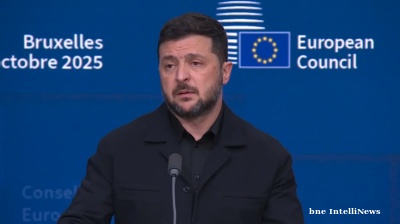The introduction of new Chinese renewable electricity pricing rules in June threaten the country’s ability to meet its Paris Agreement 2030 climate commitments, according to a report by Carbon Brief.
The new policy removes existing price guarantees linked to coal-power rates, requiring new wind and solar projects to negotiate contracts directly with electricity buyers.
“This is likely to lead to lower prices being paid to new wind and solar projects,” Carbon Brief reported on May 16. However, more favourable pricing will still be available via “contracts for difference” for capacity aligned with central government targets.
China has emerged as the global green energy champion and heavy investment into renewables has seen clean energy renewable energy output overtake that of its continued reliance on fossil fuels and coal, resulting in the first reduction in annual CO2 emissions this year, Carbon Brief reported. But despite the progress, China is still not out of the woods yet and remains the world’s biggest emitter of greenhouse gases (GHGs) and is still heavily dependent on coal-fired power plants for the energy required to fuel its fast economic growth.
The immediate effect has been a rush to complete installations ahead of the June deadline. “This rush was already apparent in the latest data: 23 GW of solar and 13 GW of wind was added in March alone, up 80% and 110% from previous records for the month,” the report said.
Industry forecasts point to continued strong additions in 2025, despite the policy shift. The China Wind Energy Association anticipates 105-115 GW of new capacity this year, with the China Electricity Council projecting up to 120 GW. One analyst anticipates a 20% drop in 2026 but from a higher 2025 base of 120-130 GW, meaning 2026 could still exceed 2024’s record.
In solar, the China Photovoltaic Industry Association forecasts an 8-23% drop from last year’s record 278 GW. Even at the low end, this would match 2023 levels, according to Carbon Brief. The China Electricity Council's projection aligns with the association's lower estimate.
“Additional electricity generation from new clean power capacity is expected to remain above last year’s record-breaking levels in both 2025 and 2026,” the analysis noted.
Despite the otherwise positive performance in rolling out renewables – two thirds of all the solar panels in the world are in China – the new policy has injected uncertainty. “The stop-go cycle of a flood of installations in the first half of this year and then a slowdown in the second half... is likely to be a tough time for the industry,” the report said.
Two key concerns are local implementation – where provincial governments retain discretion – and the linkage of favourable pricing to national targets. “The pricing policy ties the availability of more favourable pricing to central government energy targets, after clean-energy growth outpaced those targets by a wide margin in the past few years.”
The National Energy Administration has set a target of “more than 200 GW” of annual clean energy additions, well below the 360 GW added in 2024.
Meanwhile, China’s nuclear programme is also accelerating, with 10 GW of new reactor projects approved in April, matching approvals in the previous two years. These will contribute to emissions reductions closer to 2030.
However, the uncertainty surrounding the renewables expansion affects China’s climate credibility. “After exceptionally slow progress in 2020-23, China is significantly off track for its 2030 commitment to reduce carbon intensity,” Carbon Brief said. Carbon intensity fell 3.4% in 2024, below the pace needed to meet interim and long-term targets.
The 2025 government work plan omitted a carbon intensity target, signalling reduced policy emphasis. “The absence of a carbon intensity target and the lack of emphasis on reducing carbon intensity also signals that meeting the target is not seen as a priority at the moment.”
While “dual-carbon” goals – to peak CO2 before 2030 and achieve neutrality before 2060 – remain in place, they permit rising emissions until the decade’s end. This implies a possible increase in absolute emissions from 2024 levels, even if intensity declines.
Looking ahead, the outcome depends on the next five-year plan and the policy response to economic headwinds, including US tariffs. Short-term effects may lower demand and emissions, but stimulus directed at heavy industry could drive emissions back up.
“The new renewable electricity pricing policy... further increases the importance of target-setting in China’s upcoming 2035 climate targets under the Paris Agreement and in the next 15th five-year plan,” the analysis concluded.
bneGREEN

Another huge typhoon bears down on the Philippines
Typhoon Fung Wong, known locally as Uwan, is expected to strengthen into a super typhoon — with sustained winds of at least 185 km per hour before striking the main island of Luzon as early as the evening of November 9.
_1762522568.jpg)
World leaders gather in Brazil for climate summit amid waning political will
COP30 opens in Belém with Trump's absence looming large and UN chief warning of 'moral failure' on 1.5°C target

Day zero approaches Tehran as water reserves drop below 5%
Tehran faces water rationing from December as reservoir levels drop below 5%, with President Pezeshkian warning of possible evacuation if drought continues. City's 15mn residents threatened by decades of water mismanagement.

Fitch affirms Taipower’s top credit rating amid mounting transition costs
Fitch Ratings has reaffirmed the financial strength of Taiwan Power Company (Taipower), assigning a ‘AAA(twn)’ rating to the state-owned utility’s proposed TWD16.1bn ($520mn) bond issue, underscoring the company’s vital public role.




.jpg)